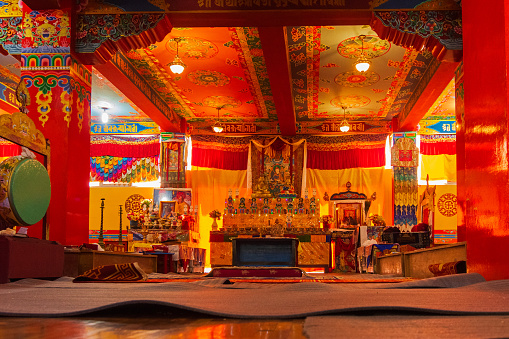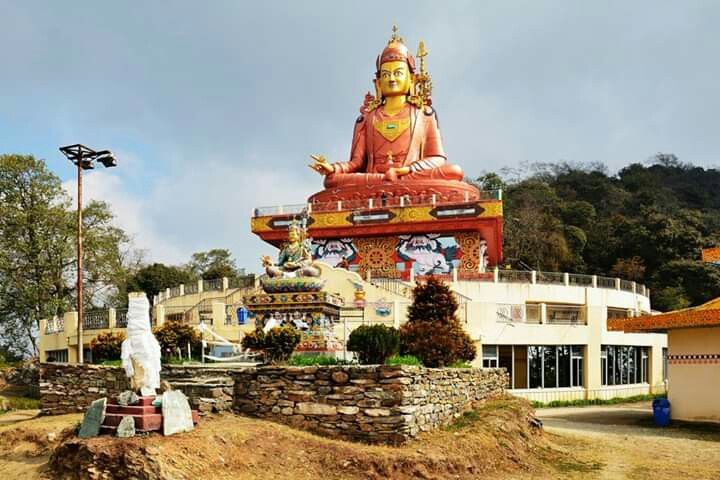SAMDRUPTSE MONASTERY
Samdruptse Monastery stands as a testament to the spiritual heritage and architectural grandeur of the region. Perched at an altitude of 2134 meters, the monastery is not just a place of worship but a beacon of peace and serenity that attracts visitors from all corners of the globe.
The journey to Samdruptse Monastery is as mesmerizing as the destination itself. As you traverse the winding roads that lead to this sacred hill, the air gets crisper, and the lush greenery of the Himalayan foothills unfolds before you. The monastery, located just 5 kilometers from the bustling town of Namchi, is easily accessible, yet it feels like a world apart.
Upon arrival, one cannot help but be awestruck by the imposing 45-meter statue of Guru Padmasambhava, also known as Guru Rinpoche, the patron saint of Sikkim. This magnificent structure, gilded with gold, sparkles under the sun, casting a divine glow over the entire area. The statue is not only a marvel of art but also an engineering feat, having been constructed over seven years with the blessings of the Dalai Lama himself.
The base of the statue houses a treasure trove of historical photographs and artifacts that offer a glimpse into Sikkim’s past. Visitors can explore the repository to learn about the state’s rich cultural tapestry, including rare portraits of Mahatma Gandhi. The prayer room within the base serves as a tranquil retreat for meditation and reflection.
Samdruptse Hill, aptly known as the ‘wish-fulfilling hill,’ provides a vantage point for breathtaking views of Mount Kangchenjunga, the third highest peak in the world. The sight of the majestic mountain, framed by the verdant slopes and the azure sky, is a memory that visitors cherish long after their departure.

For those seeking adventure, the monastery is the starting point for exhilarating treks to the nearby Tendong Hill and Maenam Hill. The trails offer not just physical challenges but also spiritual rewards, as they pass through the Maenam Wildlife Sanctuary and Tendong State Biodiversity Park, where the harmony of nature and spirituality is palpable.
The best time to visit Samdruptse Monastery is between February to May and September to mid-December when the weather is pleasant, and the scenery is soul-satisfying. An entrance fee of Rs. 30 is a small price to pay for the enriching experience that awaits.
In folklore, Guru Padmasambhava is revered as a tantric yogi who played a pivotal role in spreading Buddhism across the Himalayas. The hill is believed to be a dormant volcano, and it is said that only prayers can prevent it from erupting. This belief underscores the monastery’s significance as a spiritual stronghold, where monks and locals converge to offer their devotions.
Samdruptse Monastery is more than just a tourist attraction; it is a spiritual journey that offers a slice of Sikkim’s history, culture, and natural beauty. Whether you are a pilgrim, a history enthusiast, or a nature lover, the monastery promises an experience that is both enlightening and enchanting.
As you leave Samdruptse Monastery, the serenity and wisdom it embodies linger in your heart, reminding you of the timeless beauty and spirituality that reside in the hills of South Sikkim. It is a place that truly must be visited to be believed, a place where every stone tells a story, and every view is a blessing.


